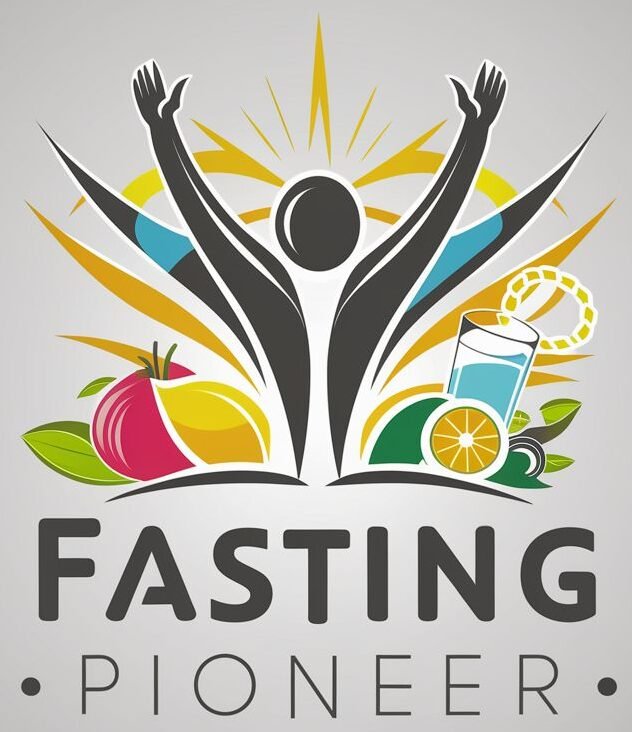So, you’re embarking on a fasting journey to boost your health and shed a few pounds, but you just can’t help but wonder: will those tiny 10 calories ruin all your efforts? It’s a burning question swirling in the minds of many fasting enthusiasts, and understandably so. In this article, we’ll explore the impact of consuming 10 calories during a fast and unravel whether it’s truly a game-changer or just a drop in the ocean of your fasting goals. Prepare to have your fasting beliefs put to the test!
Understanding Fasting
Fasting is a practice that has been around for centuries, and it involves abstaining from food for a certain period of time. It is often done for religious or spiritual purposes, but it has gained popularity in recent years as a weight loss and health strategy. So, what exactly is fasting?
Definition of fasting
Fasting can be defined as the voluntary abstention from consuming food and sometimes even liquids for a specific duration. It is a deliberate decision to withhold nutrition from the body for a set period of time. The duration of a fast can vary widely, ranging from a few hours to several days or even weeks.
Different types of fasting
There are various types of fasting that individuals can practice, depending on their goals and preferences. Some of the most common types include:
Intermittent fasting: This is a popular fasting method where you alternate between periods of fasting and non-fasting. The most common way to do intermittent fasting is by following an eating schedule such as the 16/8 method, where you fast for 16 hours and have an eight-hour window for eating.
Water fasting: This involves abstaining from all food and only consuming water for a designated period. It is often considered one of the most challenging forms of fasting and requires careful monitoring of hydration levels.
Juice fasting: Juice fasting allows for the consumption of freshly squeezed juices while abstaining from solid foods. This form of fasting is often chosen for detoxification purposes.
Partial fasting: With partial fasting, individuals limit their calorie intake to a certain extent. This may involve consuming a restricted number of calories or only specific types of food.
Benefits of fasting
Fasting has been linked to a range of potential benefits for both the body and mind. Here are a few key advantages:
Weight loss: Fasting can help create a calorie deficit, leading to weight loss. Additionally, it may also enhance fat-burning mechanisms in the body.
Improved insulin sensitivity: Fasting periods can improve insulin sensitivity, potentially reducing the risk of type 2 diabetes.
Cellular repair and autophagy: Fasting promotes a process called autophagy, where the body clears out damaged cells and replaces them with healthy ones. This can lead to improved cellular function and potentially delay the aging process.
Mental clarity: Some individuals report improved mental clarity and focus during fasting periods.
Potential disease prevention: Fasting has been associated with a reduced risk of chronic diseases such as heart disease, cancer, and neurodegenerative disorders.
What Breaks a Fast?
While fasting can offer numerous benefits, it’s crucial to understand what can break a fast. Many people wonder if consuming minimal calories, such as 10 calories, would disrupt their fasting state.
Calories and fasting
Calories are units of energy found in food and beverages. They provide the fuel necessary for the body to function properly. During a fast, the intention is to minimize calorie intake to induce certain metabolic changes. However, the specific amount of calories that can be consumed without breaking a fast remains a topic of debate.
Factors that break a fast
While the general consensus is that consuming calories technically breaks a fast, the degree to which this affects the fasting state varies. Some factors that can influence whether a fast is broken include:
Caloric content: The higher the calorie content, the more likely it is to disrupt the fasting state. Consuming nutrient-dense foods with higher calorie levels is more likely to break a fast compared to ingesting a small amount of low-calorie foods.
Insulin response: Insulin, a hormone released when we eat, can negate some of the benefits of fasting. Consuming foods that trigger a significant insulin response can impact the fasting state.
Macronutrient composition: Proteins and carbohydrates are much more likely to break a fast compared to small amounts of fats. This is because proteins and carbohydrates elicit a substantial hormonal response, while fats have a minimal impact.
Effects of breaking a fast
The consequences of breaking a fast can vary depending on the individual and their specific goals. In general, breaking a fast may disrupt the metabolic processes that occur during fasting, such as ketosis, autophagy, and fat burning. However, the severity of these effects can differ based on various factors, including the amount and type of calories consumed and the duration of the fast.
Does 10 Calories Break a Fast?
Now, let’s address the question at hand: Does 10 calories break a fast? To answer this, it’s essential to understand the significance of 10 calories, as well as the metabolic impact it may have.
The significance of 10 calories
Ten calories may seem like a minuscule amount, but even a small intake of calories can have some metabolic consequences. While the effects may not be as significant as consuming a full meal, it’s important to acknowledge that any caloric intake can impact the body’s fasting state to some extent.
Definition of a calorie
A calorie is a unit of measurement used to quantify the amount of energy supplied by a food or beverage. It represents the energy required to raise the temperature of one gram of water by one degree Celsius.
Metabolic impact of 10 calories
The metabolic impact of consuming 10 calories during a fast can vary depending on factors such as the specific macronutrient composition and the individual’s metabolic state. Generally, a small intake of 10 calories is unlikely to cause a significant rise in blood sugar or insulin levels. However, it may still temporarily interrupt ketosis, suppress autophagy, and potentially slow down the fat-burning process.
Factors to Consider
To determine the impact of 10 calories on fasting, several factors need to be taken into account. These factors can influence the body’s response to minimal calorie intake during a fasting period.
Type of fasting
Different fasting methods have varying degrees of tolerance for caloric intake. Intermittent fasting, for example, generally allows for a small number of calories during fasting windows, which may include 10 calories. However, more strict forms of fasting, such as water fasting, may require complete abstinence from calories.
Individual variations
Metabolic responses can differ from person to person. Factors such as age, sex, body composition, and overall health can affect how the body reacts to minimal calorie intake during fasting. Some individuals may tolerate 10 calories without significant disruption to their fasting state, while others may experience a more substantial impact.
Timing and frequency
The timing and frequency of calorie consumption during a fasting period can also influence the body’s response. Consuming 10 calories at the beginning or end of a fasting window may have a different effect compared to consuming them in the middle. Similarly, the frequency at which 10 calories are consumed throughout the fasting period can also play a role in the overall metabolic impact.
Intermittent Fasting and 10 Calories
Intermittent fasting, a popular fasting method, often allows for a small calorie intake during fasting windows. So, how does 10 calories fit into this approach? Let’s explore further.
Overview of intermittent fasting
Intermittent fasting involves cycling between periods of eating and fasting. The fasting period typically ranges from 12 to 24 hours, during which minimal calories or no calories at all are consumed. The most common approach is the 16/8 method, where individuals fast for 16 hours and have an eight-hour window for eating.
Effects of 10 calories in different fasting windows
In the context of intermittent fasting, consuming 10 calories during a fasting window is generally considered to be within the acceptable range. However, it’s important to note that the effects of these calories can vary depending on the timing within the fasting window. Consuming 10 calories at the beginning or end of the fasting period may have a milder impact compared to consuming them in the middle.
Interplay between calorie intake and fasting benefits
While consuming 10 calories during a fasting window may not completely halt the benefits of fasting, it’s essential to remember that calorie intake can still impact the body’s metabolic processes. The primary goal of intermittent fasting is to induce specific physiological changes that promote fat burning, autophagy, and cellular rejuvenation. Consuming calories, even in small amounts, may temporarily hinder these processes to some extent.
Health Effects of 10 Calories During Fasting
What are the health effects of consuming 10 calories during a fast? Let’s explore the potential impact on key physiological mechanisms.
Blood sugar and insulin response
Consuming 10 calories during a fast is unlikely to cause a significant rise in blood sugar levels or trigger a substantial insulin response. However, it’s worth noting that certain foods can have a more pronounced effect on blood sugar and insulin levels. Foods high in carbohydrates or proteins are more likely to elicit a greater hormonal response compared to low-calorie fats.
Autophagy and cellular rejuvenation
Autophagy is a process that occurs during a fast, where the body breaks down and recycles damaged cells. While consuming 10 calories may temporarily interrupt autophagy, the extent of this interruption is likely to be minimal. Resuming the fast after the calorie intake should allow autophagy to resume and support cellular rejuvenation.
Ketosis and fat burning
One of the primary goals of fasting is to induce ketosis, a metabolic state where the body uses stored fat as its primary fuel source. Consuming 10 calories during a fast may temporarily disrupt ketosis, as the body shifts its focus to metabolizing the ingested calories. However, once these calories are utilized or burned, the body should revert to relying on stored fat for energy.
Which Foods Contain 10 Calories?
When it comes to low-calorie foods, there are a variety of options available that can fit within a 10-calorie limit. Here are some examples:
Examples of low-calorie foods
- Celery: One medium stalk of celery contains approximately 10 calories.
- Cucumber: A quarter of a medium-sized cucumber contains around 10 calories.
- Baby carrots: Approximately seven baby carrots make up 10 calories.
- Spinach: A cup of raw spinach equates to approximately 10 calories.
- Broccoli: Around one and a half cups of raw broccoli contain roughly 10 calories.
Snacks and beverages with minimal calories
- Green tea: A cup of unsweetened green tea typically contains less than 10 calories.
- Sugar-free gum: Many brands of sugar-free gum have negligible calorie content, typically less than 10 calories per piece.
- Water: Plain water contains zero calories and can be consumed freely during a fast.
Tips for incorporating low-calorie options during fasting
To include low-calorie options within your fasting practice, consider the following tips:
- Choose vegetables or fruits with low calorie density.
- Opt for non-caloric or low-caloric beverages, such as herbal tea or flavored water.
- Read food labels to determine the calorie content of packaged products.
- Be mindful of portion sizes to ensure you’re within your desired calorie limit.
The Rule of Thumb for Fasting
When it comes to fasting, there is no one-size-fits-all rule. However, there are a few general principles to keep in mind.
Role of calorie restriction
Calorie restriction is a key component of most fasting protocols. The primary aim is to create a calorie deficit, which can lead to weight loss and metabolic changes. While consuming minimal calories, such as 10 calories, may be permissible in certain fasting approaches, it’s important to strike a balance between caloric restriction and providing the body with the necessary nutrients it needs to function optimally.
Balancing physiological and psychological well-being
While the physiological effects of fasting are well-documented, it’s also crucial to consider the psychological impact. Restrictive approaches that are overly rigid or result in feelings of deprivation may not be sustainable or conducive to long-term success. It’s essential to find a fasting protocol that aligns with your personal preferences and goals while still prioritizing overall well-being.
Seeking professional advice
If you’re considering fasting or have specific health concerns, it’s always wise to consult with a healthcare professional or registered dietitian. They can provide personalized guidance based on your unique circumstances and help ensure that your fasting practice is safe and effective.
Understanding Personal Goals
When it comes to fasting, it’s important to consider your individual goals and how they align with your caloric intake during fasting.
Weight loss and calorie consumption
Weight loss is a common goal for many individuals who practice fasting. To achieve weight loss, maintaining a calorie deficit is crucial. Consuming 10 calories during a fast is unlikely to disrupt weight loss efforts as long as the overall calorie intake remains within a deficit.
Maintenance of ketosis
For those specifically aiming to achieve or maintain a state of ketosis, consuming 10 calories during a fast may temporarily interrupt ketosis. However, once those calories are burned or utilized, the body should resume its reliance on stored fat for fuel.
Adherence to fasting protocols
Adhering to a fasting protocol is essential for achieving desired outcomes. Consuming 10 calories within a fasting period may be acceptable for some individuals as long as it doesn’t compromise their compliance and adherence to the overall fasting regimen. Ultimately, finding a balance between nutritional adherence and the sustainability of the fasting routine is key.
Conclusion
In conclusion, the impact of consuming 10 calories during a fast can vary depending on several factors, including the fasting method, individual metabolic response, and timing of consumption. While minimal calories are unlikely to completely negate the benefits of fasting, they can temporarily disrupt metabolic processes such as ketosis and autophagy to some degree.
Ultimately, understanding your personal goals and considering the bigger picture is crucial when determining the impact of 10 calories during a fast. Additionally, experimentation and self-awareness are valuable tools in finding the fasting approach that works best for you. If you have any concerns or specific health considerations, it’s always advisable to seek professional advice to ensure your fasting practice is safe and effective.








